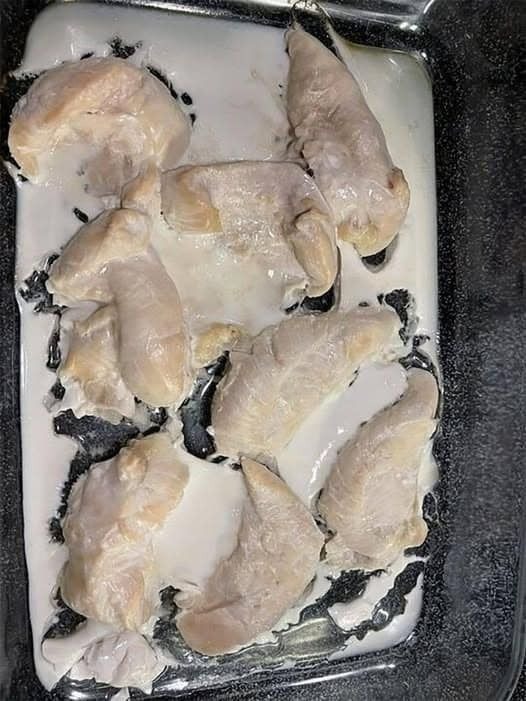ADVERTISEMENT
**How the Mysterious White Goo on Cooked Chicken Works: A Look into the Science Behind It**
Have you ever noticed a mysterious white goo or liquid on your cooked chicken? It’s often a bit alarming, especially if you’re not sure where it comes from or what it actually is. But don’t worry—it’s completely normal, and understanding the science behind it can ease your concerns. This phenomenon is a common occurrence in cooking chicken, and while it might look strange, it’s not harmful. In fact, it’s simply a byproduct of cooking meat, and there are a few reasons why it appears.
Let’s take a deep dive into the science behind that white goo and what it actually means for your chicken!
### What is the White Goo on Cooked Chicken?
The white goo that forms on your cooked chicken is usually a combination of **protein and water** that is released during the cooking process. It is primarily **myosin**, a protein found in muscle tissue, mixed with **water** that was bound within the meat fibers.
When meat cooks, the heat causes muscle proteins like **myosin** to contract and expel the water they were holding. This is especially true in chicken, which is high in protein and contains a lot of water. The goo is a result of these proteins being forced out of the muscle fibers as the heat breaks them down.
### The Role of Myosin in Chicken Meat
Myosin is one of the key proteins in chicken muscle tissue. It helps muscle fibers contract and is essential for movement. When chicken is heated during cooking, the protein undergoes a process called **denaturation**. This means that the protein molecules lose their natural shape and structure due to heat.
As myosin denatures, it causes the muscle fibers to contract, squeezing out some of the water that was previously contained in the meat. This expelled water often mixes with the denatured proteins, creating that gooey, sometimes milky substance that can appear on the surface or inside the meat.
### The Importance of Cooking Temperature
The temperature at which you cook your chicken can influence the amount of white goo you see. When chicken is cooked at too high of a temperature, the proteins contract too quickly, forcing out more moisture. This often results in a greater amount of goo being produced.
If you cook chicken on high heat for too long, the result can be dry meat with excessive goo. On the other hand, if you cook chicken at a more moderate temperature, the proteins contract more slowly, resulting in less of the white liquid being released, and the chicken can retain more moisture and tenderness.
### Why Does It Happen More with Chicken?
Chicken is particularly prone to producing this white goo for a couple of reasons. First, **chicken meat is more tender and has a higher water content** compared to other meats like beef or pork. This makes chicken more likely to release moisture when cooked.
Second, chicken is often cooked at higher temperatures, especially when it’s pan-fried, grilled, or roasted. This rapid cooking can force moisture to the surface more quickly, leading to the appearance of the goo.
Is the White Goo Safe to Eat?
For Complete Cooking STEPS Please Head On Over To Next Page Or Open button (>) and don’t forget to SHARE with your Facebook friends
Yes! The white goo that appears on your chicken is completely safe to eat. It’s simply a mixture of proteins and water. While it may look unappetizing to some, it’s not harmful. The goo is just a natural result of cooking and can even contribute to the juiciness of the chicken, especially if the meat is cooked properly.
However, if you find that your chicken is consistently dry or tough and the white goo is excessive, it might indicate that the chicken has been overcooked or cooked at too high a temperature. To avoid this, try cooking chicken at a lower heat and using methods like baking, poaching, or slow-cooking to retain more moisture in the meat.
### How to Avoid Excessive White Goo
If you’re not a fan of the white goo and want to minimize it, here are a few tips for cooking chicken:
1. **Cook at a Lower Temperature:** Instead of high heat, opt for medium to low heat. This will allow the proteins to denature more gradually, resulting in less liquid being forced out of the chicken.
2. **Avoid Overcooking:** The longer you coo
ADVERTISEMENT
ADVERTISEMENT
